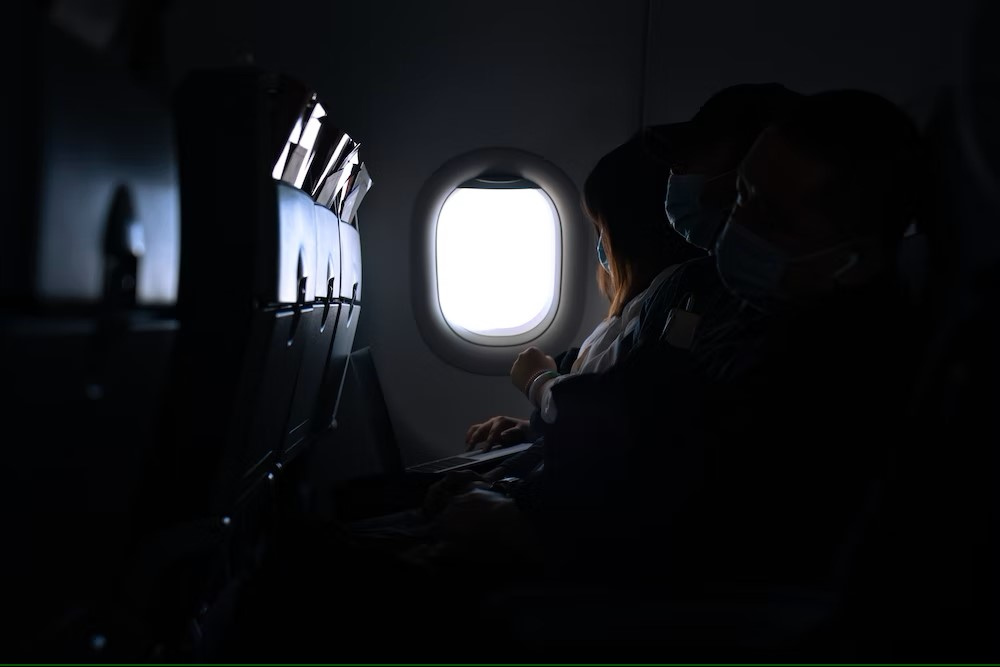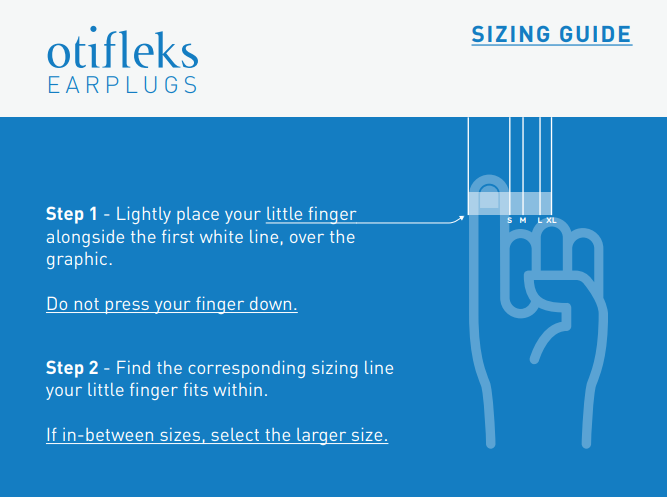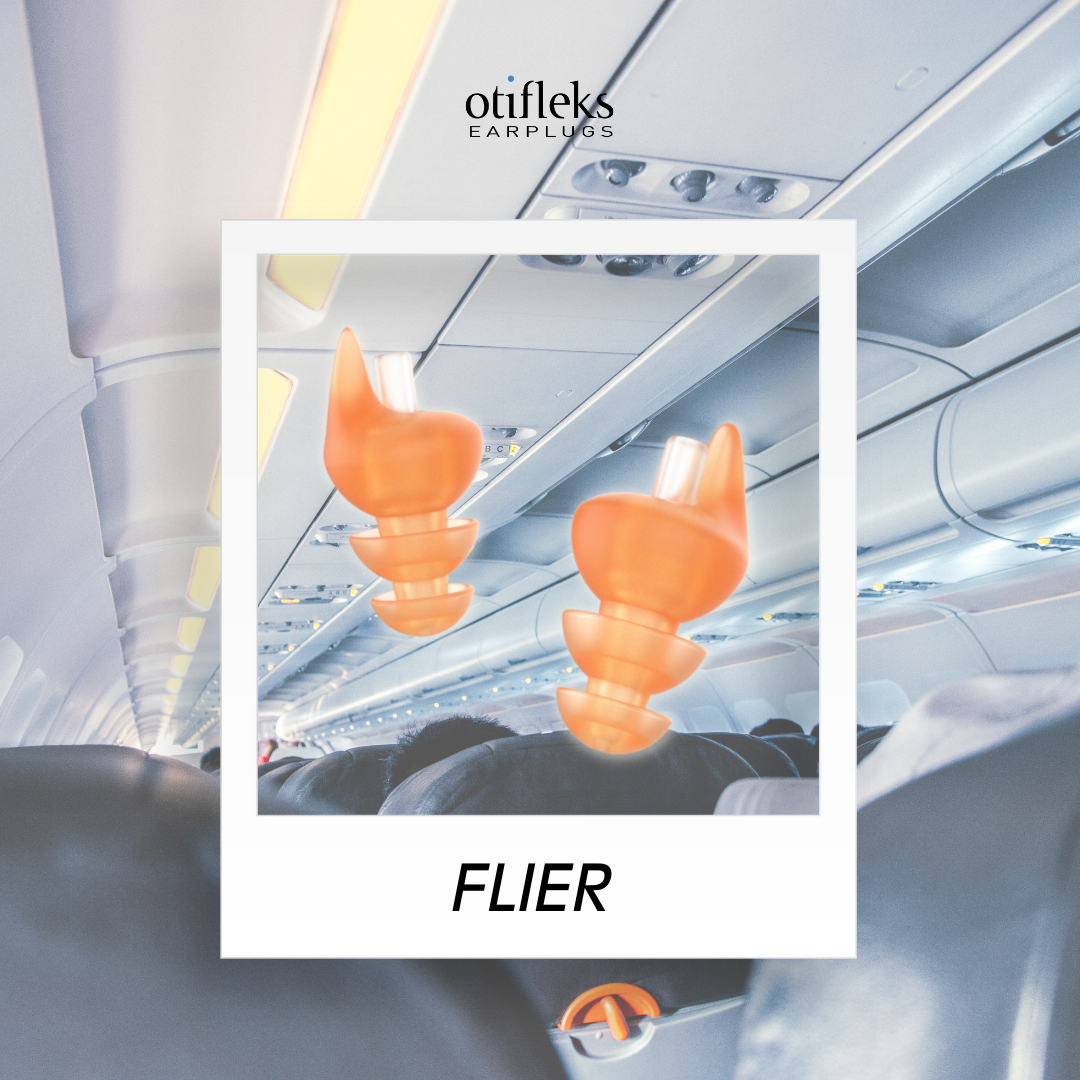FREE SHIPPING OVER $99
- Home
- Blog
- Fitness & Lifestyle
- Ears and Travelling

Ears and Travelling
What causes ear discomfort during air travel?
When an airplane begins to descend towards a destination, passengers may begin to notice a change in their ears. They experience an uncomfortable sensation – a mixture of blockage and discomfort.
When the pressure between inside and outside the eardrum is unbalanced, airplane ear, a mild form of ear barotrauma, can develop.
Barotrauma is a medical condition that occurs when there is a pressure difference between the air spaces inside the body, resulting in damage to the ear tissues. Barotrauma to the ear is a frequent form of barotrauma that results from an imbalance in pressure between the air inside the middle ear and the air outside the ear, causing ear discomfort and reduced hearing.1
This occurs when the air pressure around the plane decreases, pushing the eardrum inward and causing temporary discomfort until adaptation occurs. 1
Does airplane ear affect all passengers?
Changes in pressure can affect individuals differently; some may feel pain or obstruction, while others might not. Those with congestion caused by allergies or cold may be more sensitive to the changes and more likely to have blocked ears and pain.1
Explaining Ear Pressure
The air pressure in the middle ear is typically maintained by the connection of the Eustachian tube between the eardrum and the back of the nose. Both sides of the eardrum should be evenly balanced. When a plane descends, the pressure outside of the ear becomes greater, causing pain due to an inward movement of the eardrum. To reduce this discomfort, there must be a quick increase in pressure within the middle ear, achieved by air going up the Eustachian tube.
Some people experience more consequences than others – why is this?
The pressure in the ear canal is commonly equalized by swallowing, chewing or by the wider opening of the eustachian tube. Airlines frequently provide candies to travelers when the plane is descending in order to activate swallowing and chewing, which can aid in opening the eustachian tube.
In some people, the Eustachian tube does not easily unblock, causing unequalised pressure. The Eustachian tube may be narrower than usual, or any blockages caused by mucus and inflammation from colds, throat infections, hay fever, etc., can cause issues with hearing. An increase in mucus in your nasal cavity can cause this. 3
Valsalva Maneuver
To relieve ear discomfort, the Valsalva Manoeuvre can be used. This involves taking a breath in and then breathing out with the mouth closed and nose held closed. Doing this may cause a ‘popping’ sensation as air enters the middle ear. Repeating this periodically will often resolve the issue until landing.
What steps can be implemented for my child
During descents, children typically experience pressure changes in their ears which can cause discomfort. Depending on the age of the child, they may not be able to perform the Valsalva Maneuver to remedy this issue.
One way to help your child relieve the discomfort of air pressure changes is by providing them with a soft drink or lollipop. This can help reduce the pressure in their inner ear and help them to adapt more quickly. If they are old enough, you can also encourage them to yawn, chew gum or swallow while they descend. 2
Bottle-feed your Baby
Initiating the suction and swallowing movement will help to balance the pressures exerted on them.
It may be beneficial to use a pacifier
A dummy (pacifier) may provide the same satisfaction to a baby as feeding them.
Give them a candy to suck on
Boiled sweets are not recommended for young children due to the possibility of choking, however older children may find it useful as a remedy and it may make them popular among their peers.
Have them drink using a straw
A straw or sports bottle for drinking can be beneficial, as it replicates the sucking action of other methods.
Give paracetamol or ibuprofen
For children who have a cold and may have trouble during a flight, administration of paracetamol or ibuprofen an hour prior to landing may be beneficial in making the journey more comfortable. Decongestants should not be given to children. 4
If you are likely to experience aeroplane ear, the tips outlined before may need to be supplemented with additional measures.
Eating candy or chewing gum is recommended
As the plane descends, it is recommended to swallow, chew or perform a mouth-opening action in order to open the eustachian tube. Additionally, it may be beneficial for babies to be fed or given a pacifier during descent in order to promote air flow by encouraging them to swallow.
Remain alert during the airplane’s descent
Ask the flight attendant to wake you up when the plane is nearing its destination. If you’re already awake, try to relieve the pressure from your ears by drinking, or by taking a deep breath and letting it out slowly.
Antihistamine tablets
Antihistamine tablets can be bought at pharmacies and their use prior to, and during, traveling may reduce the level of mucus secretion.
A nasal decongestant
A nasal decongestant, can be used to dry up mucus in the nose. It should be sprayed into the nose about one hour before descent and again five minutes afterwards. Every 20 minutes until arrival should also be repeated. However, these sprays are only for short-term use. 5
A decongestant such as pseudoephedrine can be purchased from a pharmacy without a prescription. It should be taken 30 minutes before take-off and repeated according to directions if necessary.
Air pressure-regulation earplugs
Air pressure-regulation earplugs are a cheap, reusable option. They can be purchased from airports and many pharmacies. These ear plugs reduce the rate of air pressure change on the eardrum which is the issue caused by flying. Instructions should be followed when using them; they should be placed in before the aircraft door is closed, they can remain in for the entire flight or removed once at cruising height and replaced before descent. 6
The Otifleks Flier earplug has a pressure-compensating microfilter that evenly regulates pressure in the ear, reducing discomfort caused by rapid pressure changes.
Before making a purchase, we recommend using the online sizing guide. You can either follow the instructions to determine your size using our printable size guide.
Otifleks Downloadable Sizing Guide
This earplug is suitable for all stages of air travel, including takeoff, flying and landings. It features a unique micro-filter that reacts to pressure changes in order to reduce discomfort. The thermo-active material softens when it contacts the body heat, and it blocks up to 17 dB of sound. There are two sizes available (M/L), and they are virtually unnoticeable. They are designed for easy insertion and removal, plus they can be reused for up to two years and cleaned with soap and water. The packaging also serves as a carry container.
Otifleks’ Micro Filter is designed to offer maximum attenuation while still allowing pressure to equalise on both sides of the earplug.
Flier’s thermo-active material offers superior comfort by matching your body temperature within 4 minutes, conforming to the unique bends, turns, bumps and twists of each individual’s ear.
Utilising the latest findings in ergonomic design and harnessing the power of thermo-reactive elastomer, the minimalist size of the Flier leads to maximised comfort, blocking sound whilst you sleep on your flight.
What are the important things to consider?
Complications while flying are uncommon, which explains why millions of people fly regularly. Rarely, the eardrum may be under pressure enough to burst (perforate), resulting in a hole in the eardrum and sudden relief from prior pain. Perforated eardrums typically resolve with no treatment.
Flying with an ear infection- Is it Safe?
When flying with an ear infection (e.g. otitis media or otitis externa), it is not recommended due to the potential of worsening symptoms and increasing risk of a ruptured eardrum. If flying is unavoidable, decongestants can be taken by adults and children 6-12 years old with advice from a pharmacist. It is recommended to take paracetamol or ibuprofen during the flight as a form of relief. 7
To Conclude
In order to ensure a comfortable and safe flight, it is important that all necessary precautions are taken. Before flying, make sure to consult with a doctor if you have an ear infection or any other ear-related issues. Additionally, decongestants may be used for adults and children aged 6-12 with consultation from a pharmacist. Air pressure-regulation ear plugs can reduce the rate of pressure change and make the flight more comfortable.
Flying can cause several issues related to the ears, such as pain and discomfort due to changes in air pressure. In order to reduce these issues, it is important to take precautions before flying, including taking decongestants, using air pressure-regulation earplugs or Otifleks Flier earplugs with microfilters. It is also important to be aware that flying with an ear infection is not recommended.8
Sources:
- Ear Barotrauma: Causes, Diagnosis and Treatments (healthline.com)
- patient.info
- Is It Sinusitis or Allergies? (webmd.com)
- Flying and Your Child’s Ears (for Parents) – Nemours KidsHealth
- Middle Ear and Sinus Problems | SKYbrary Aviation Safety
- Ways to Unclog Ears on Flight That Actually Work (insider.com)
- Ears and Flying (Aeroplane Ear): Symptoms and Treatment | Patient
- Ear Infection | Antibiotic Use | CDC
Tags
Leave a Comment Cancel reply
SUBSCRIBE
Subscribe to our mailing list so that you can be the first to know about new products and promotions.
© 2024. All Rights Reserved.







